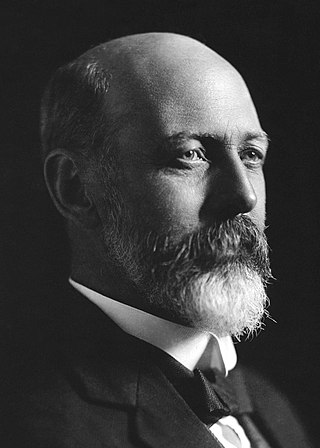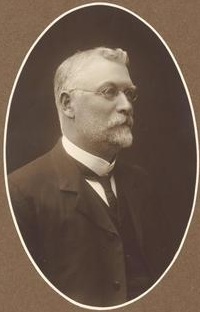| This article is part of a series on the |
| Australian House of Representatives |
|---|
 |
| History of the House |
| Members |
| Electoral divisions |
| Politics and procedure |
| Places |
This is a list of the members of the Australian House of Representatives in the Sixth Australian Parliament, which was elected at the 1914 election on 5 September 1914.
There was a significant change in the party system during the Sixth Parliament. There was a split in the Australian Labor Party on 14 November 1916, when the then Prime Minister Billy Hughes walked out of a meeting of the Labor caucus over the issue of conscription along with twenty-four of his supporters, who were all then expelled from the party. Hughes and his followers became the informal "National Labor Party", which formed a minority government until merging with the Commonwealth Liberal Party on 17 February 1917 to form the Nationalist Party of Australia.
| Member | Party | Electorate | State | In office | |
|---|---|---|---|---|---|
| Percy Abbott | Liberal / Nationalist | New England | NSW | 1913–1919 | |
| Frank Anstey | Labor | Bourke | Vic | 1910–1934 | |
| William Archibald | Labor / National Labor / Nationalist | Hindmarsh | SA | 1910–1919 | |
| John Arthur [1] | Labor | Bendigo | Vic | 1913–1914 | |
| Llewellyn Atkinson | Liberal / Nationalist | Wilmot | Tas | 1906–1929 | |
| Fred Bamford | Labor / National Labor / Nationalist | Herbert | Qld | 1901–1925 | |
| Sir Robert Best | Liberal / Nationalist | Kooyong | Vic | 1910–1922 | |
| James Boyd | Liberal / Nationalist | Henty | Vic | 1913–1919 | |
| Frank Brennan | Labor | Batman | Vic | 1911–1931, 1934–1949 | |
| Reginald Burchell | Labor / National Labor / Nationalist | Fremantle | WA | 1913–1922 | |
| George Burns | Labor | Illawarra | NSW | 1913–1917 | |
| Ernest Carr | Labor / National Labor / Nationalist | Macquarie | NSW | 1906–1917 | |
| James Catts | Labor | Cook | NSW | 1906–1922 | |
| John Chanter | Labor / National Labor / Nationalist | Riverina | NSW | 1901–1903, 1904–1913, 1914–1922 | |
| Austin Chapman | Liberal / Nationalist | Eden-Monaro | NSW | 1901–1926 | |
| Matthew Charlton | Labor | Hunter | NSW | 1910–1928 | |
| Joseph Cook | Liberal / Nationalist | Parramatta | NSW | 1901–1921 | |
| Edward Corser [2] | Liberal / Nationalist | Wide Bay | Qld | 1915–1928 | |
| George Dankel | Labor / National Labor / Nationalist | Boothby | SA | 1913–1917 | |
| James Fenton | Labor | Maribyrnong | Vic | 1910–1934 | |
| William Finlayson | Labor | Brisbane | Qld | 1910–1919 | |
| Andrew Fisher [2] | Labor | Wide Bay | Qld | 1901–1915 | |
| William Fleming | Liberal / Nationalist | Robertson | NSW | 1913–1922 | |
| Sir John Forrest | Liberal / Nationalist | Swan | WA | 1901–1918 | |
| Richard Foster | Liberal / Nationalist | Wakefield | SA | 1909–1928 | |
| James Fowler | Liberal / Nationalist | Perth | WA | 1901–1922 | |
| Paddy Glynn | Liberal / Nationalist | Angas | SA | 1901–1919 | |
| Henry Gregory | Liberal / Nationalist | Dampier | WA | 1913–1940 | |
| Littleton Groom | Liberal / Nationalist | Darling Downs | Qld | 1901–1929, 1931–1936 | |
| Alfred Hampson [1] | Labor | Bendigo | Vic | 1915–1917 | |
| Joseph Hannan | Labor | Fawkner | Vic | 1913–1917 | |
| William Higgs | Labor | Capricornia | Qld | 1910–1922 | |
| Robert Howe [3] | Labor | Dalley | NSW | 1910–1915 | |
| Billy Hughes | Labor / National Labor / Nationalist | West Sydney | NSW | 1901–1952 | |
| Sir William Irvine | Liberal / Nationalist | Flinders | Vic | 1906–1918 | |
| Jens Jensen | Labor / National Labor / Nationalist | Bass | Tas | 1910–1919 | |
| Elliot Johnson | Liberal / Nationalist | Lang | NSW | 1903–1928 | |
| Edward Jolley [4] | Labor | Grampians | Vic | 1914–1915 | |
| Willie Kelly | Liberal / Nationalist | Wentworth | NSW | 1903–1919 | |
| John Livingston | Liberal / Nationalist | Barker | SA | 1906–1922 | |
| John Lynch | Labor / National Labor / Nationalist | Werriwa | NSW | 1914–1919 | |
| Hugh Mahon | Labor | Kalgoorlie | WA | 1901–1917, 1919–1920 | |
| William Mahony [3] | Labor | Dalley | NSW | 1915–1927 | |
| William Maloney | Labor | Melbourne | Vic | 1904–1940 | |
| Chester Manifold | Liberal / Nationalist | Corangamite | Vic | 1901–1903, 1913–1918 | |
| Walter Massy-Greene | Liberal / Nationalist | Richmond | NSW | 1910–1922 | |
| James Mathews | Labor | Melbourne Ports | Vic | 1906–1931 | |
| Charles McDonald | Labor | Kennedy | Qld | 1901–1925 | |
| Charles McGrath | Labor | Ballarat | Vic | 1913–1919, 1920–1934 | |
| William McWilliams | Liberal / Nationalist | Franklin | Tas | 1903–1922, 1928–1929 | |
| Parker Moloney | Labor | Indi | Vic | 1910–1913, 1914–1917, 1919–1931 | |
| King O'Malley | Labor | Darwin | Tas | 1901–1917 | |
| Richard Orchard | Liberal / Nationalist | Nepean | NSW | 1913–1919 | |
| Alfred Ozanne | Labor | Corio | Vic | 1910–1913, 1914–1917 | |
| Jim Page | Labor | Maranoa | Qld | 1901–1921 | |
| Albert Palmer | Liberal / Nationalist | Echuca | Vic | 1906–1919 | |
| Robert Patten | Liberal / Nationalist | Hume | NSW | 1913–1917 | |
| Henry Pigott | Liberal / Nationalist | Calare | NSW | 1913–1919 | |
| Alexander Poynton | Labor / National Labor / Nationalist | Grey | SA | 1901–1922 | |
| Edward Riley | Labor | South Sydney | NSW | 1910–1931 | |
| Arthur Rodgers | Liberal / Nationalist | Wannon | Vic | 1913–1922, 1925–1929 | |
| Granville Ryrie | Liberal / Nationalist | North Sydney | NSW | 1911–1927 | |
| Carty Salmon [4] | Nationalist | Grampians | Vic | 1901–1913, 1915–1917 | |
| Sydney Sampson | Liberal / Nationalist | Wimmera | Vic | 1906–1919 | |
| James Sharpe | Labor | Oxley | Qld | 1913–1917 | |
| Hugh Sinclair | Liberal / Nationalist | Moreton | Qld | 1906–1919 | |
| Bruce Smith | Liberal / Nationalist | Parkes | NSW | 1901–1919 | |
| William Laird Smith | Labor / National Labor / Nationalist | Denison | Tas | 1910–1922 | |
| William Spence | Labor / National Labor / Nationalist | Darling | NSW | 1901–1917, 1917–1919 | |
| Jacob Stumm | Liberal / Nationalist | Lilley | Qld | 1913–1917 | |
| Josiah Thomas | Labor / National Labor / Nationalist | Barrier | NSW | 1901–1917 | |
| John Thomson | Liberal / Nationalist | Cowper | NSW | 1906–1919 | |
| Frank Tudor | Labor | Yarra | Vic | 1901–1922 | |
| David Watkins | Labor | Newcastle | NSW | 1901–1935 | |
| William Watt | Liberal / Nationalist | Balaclava | Vic | 1914–1929 | |
| William Webster | Labor / National Labor / Nationalist | Gwydir | NSW | 1903–1919 | |
| John West | Labor | East Sydney | NSW | 1910–1931 | |
| George Wise | Independent/Nationalist [5] | Gippsland | Vic | 1906–1913, 1914–1922 | |
| George Edwin Yates | Labor | Adelaide | SA | 1914–1919, 1922–1931 | |








